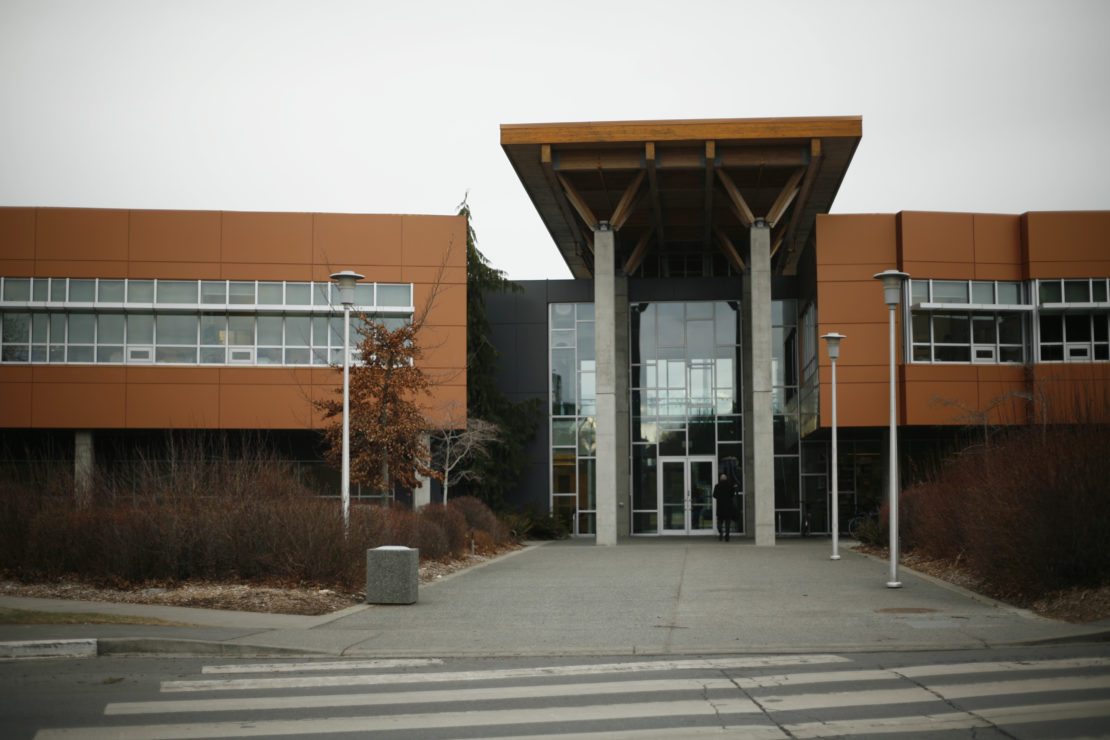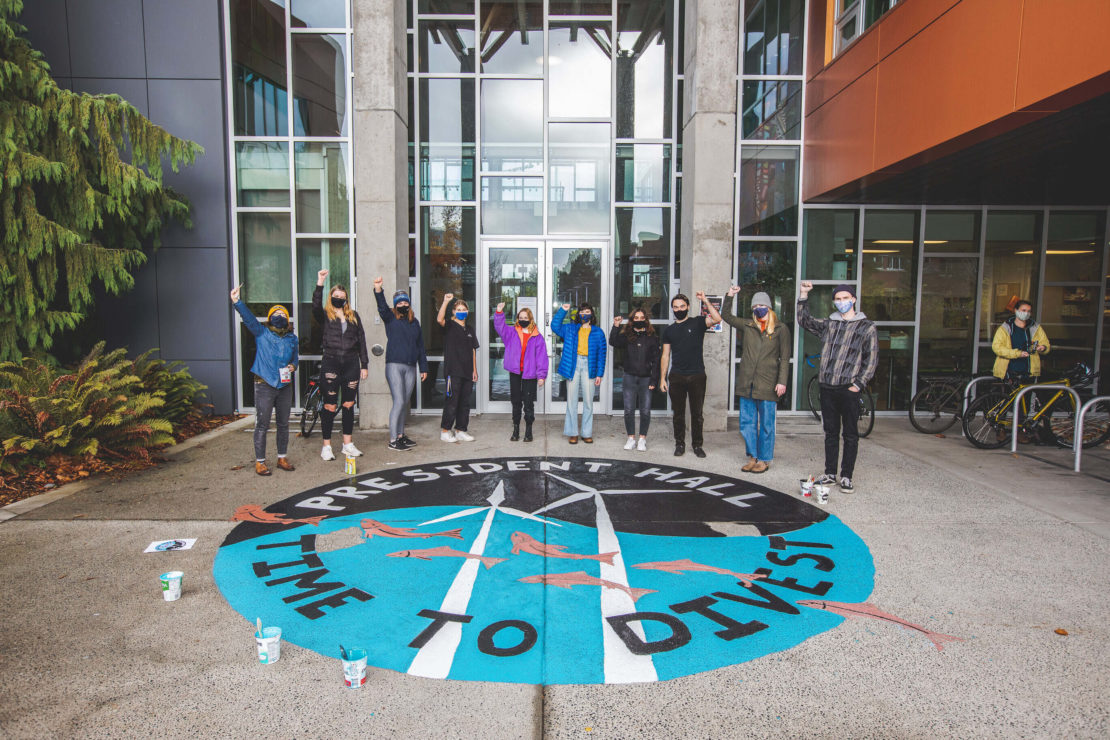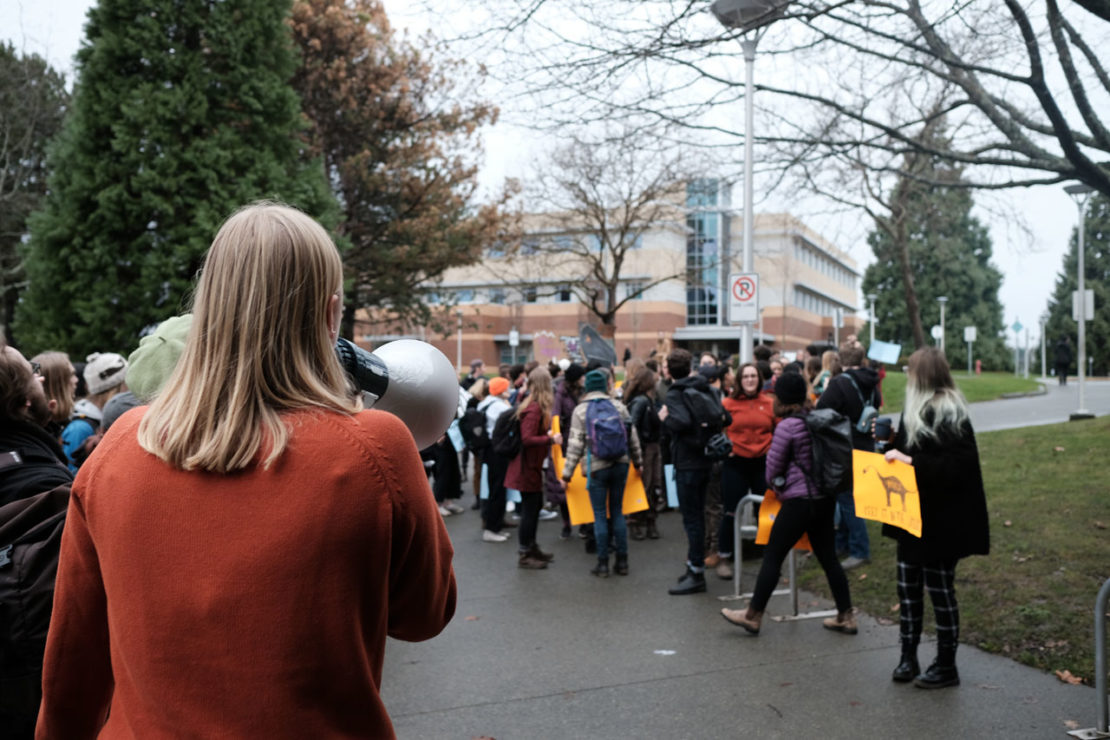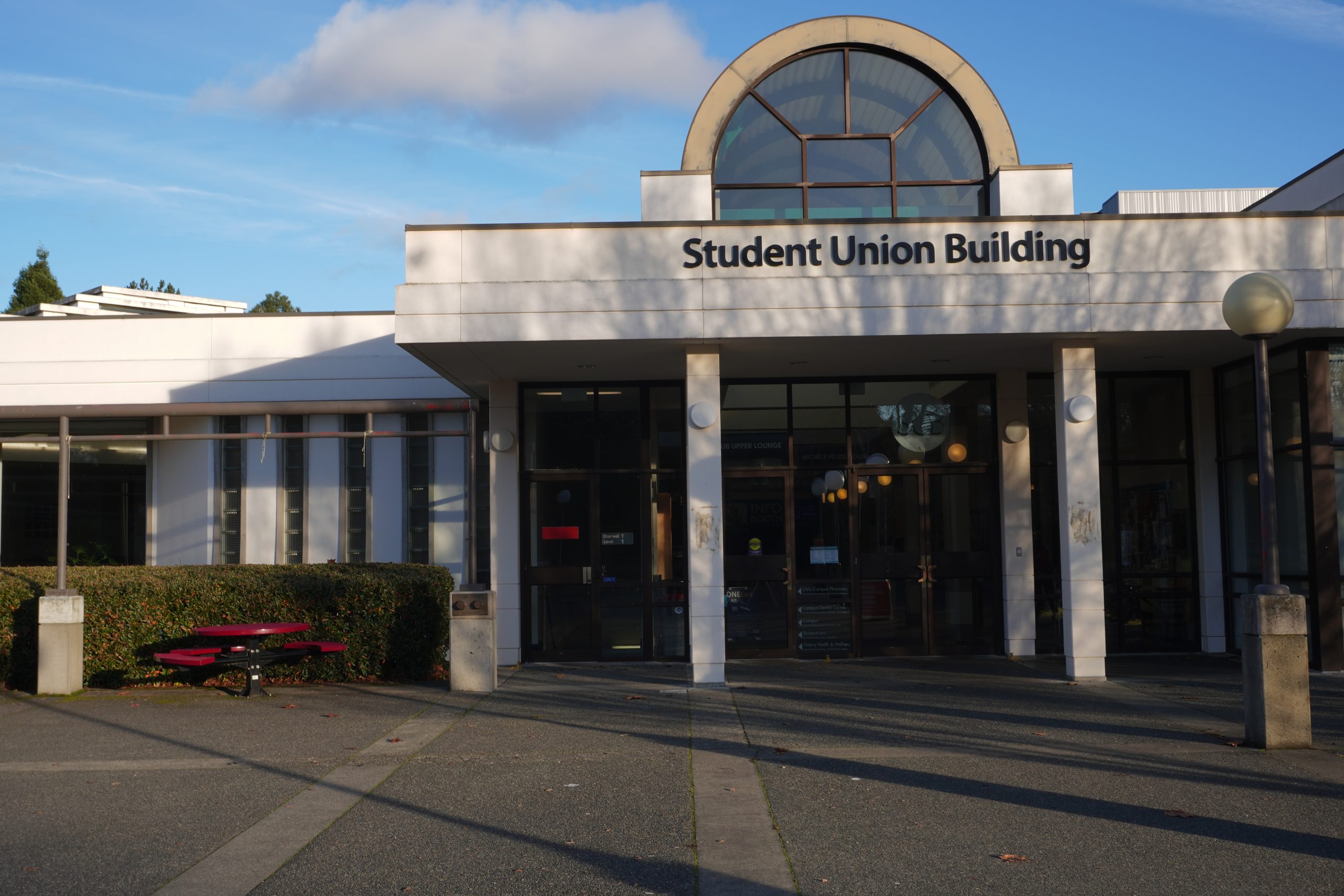Divest UVic says the university needs to do more to show a real commitment to reconciliation

In January 2020, the UVic Board of Governors passed a new investment strategy, called the Responsible Investment Policy, while protesters from Divest UVic voiced their disappointment.
Now, a year after the policy was implemented, UVic has announced a $500 000 investment in Raven Indigenous Capital Partners’ Indigenous Impact Fund. Through investments in companies like the Raven Fund, UVic aims to reduce the carbon intensity of their working capital investment portfolio by 45 per cent by 2030.
Divest UVic remains concerned, however, that the Responsible Investment Policy falls short of divestment from fossil fuels. The policy placed a focus on carbon intensity and thematic investments. Carbon intensity is a measurement of the estimated total emissions of UVic’s investment holdings across all sectors. Emily Lowan, the director of campaigns for the UVSS, says it’s a flawed metric.
Diving into UVic’s working capital investments, the responsible investment policy, and the UVic Foundation reveals the complicated path UVic is taking to attempt to decarbonize. Meanwhile, Divest UVic maintains that a negative screening approach is necessary.
UVic invests in the Raven Fund
The Raven Fund was founded in 2019. It operates with Indigenous worldviews in mind, and in collaboration with Indigenous communities through storytelling and ceremony.
The company hopes to pool investment support for Indigenous entrepreneurs — providing them with financial backing to start their small ventures. The fund has a focus on Indigenous social enterprises and aims for returns of six to eight per cent. Some of these businesses include Animikii Indigenous Technology, PLATO Testing, Cheekbone Beauty, VirtualGurus, and OneFeather.
“This investment enables UVic to support Indigenous-led social enterprise and promote the development of financial tools that address critical social, financing, and policy barriers,” said UVic Treasurer Andrew Coward.
Before UVic’s decision to invest, MBA students in UVic’s Gustavson School of Business sustainable innovation program were tasked with studying the fund. UVic joins 32 other foundations, institutions, companies, and high net-worth individuals in investing in the Raven Fund.
“It is an honour for the Raven Fund to be UVic’s first impact investment under its new responsible investment policy,” said Managing Partner Paul Lacerte, one of Raven’s three founders. “By pairing this investment with a robust case study and ongoing student engagement, we are role modelling the way that reciprocity can show up as a key feature of real economic reconciliation.”
Although Lowan says the Raven Fund is a great investment, she is cautious about praising the Responsible Investment Policy as a whole.
“While this $500 000 investment is a good start, it doesn’t wash the university’s hands clean,” Lowan said.
Inside the Responsible Investment Policy
There are two main investment pools relevant to UVic: the UVic Foundation’s endowment funds and the university’s working capital investments. The Responsible Investment Policy only applies to the working capital investments and the $225 million therein. The UVic Foundation manages over twice as much money ($470 million) and invests money donated to the university through endowed donations.
The money invested in the Raven Fund comes from UVic’s working capital investments, and is therefore governed by the Responsible Investment Policy. The policy sets two substantial goals for the working capital investments pool: reduce the carbon intensity of the pool by 45 per cent by 2030 and invest at least 25 per cent of the portfolio in “thematic investments,” like the Raven Fund. Thematic investments are investments that “generate positive, measurable social and environmental impact alongside a financial return.”
Coward explained that the Board of Governors’s decarbonization working group has decided to measure the carbon intensity of their investments based on specific categories of emissions. These categories are scope one, two, and three emissions.
The university is assessing carbon intensity by looking at only scope one and two carbon emissions. Coward explained that scope one and two emissions represent “direct emissions from owned or controlled sources” and “indirect emissions from the generation of purchased electricity, steam, heating, and cooling consumed by the reporting company.”
Take a hypothetical car company that the university might invest in. The emissions the company releases during production count as scope one and the energy the company’s buildings use would be scope two. The energy used at later stages, like by all the cars the company sells to consumers, would not be included.
Coward says that the data on scope three emissions, all other emissions not included in scope one or two, is not available yet. However, Coward says UVic is looking to expand their analysis if this information becomes available.
When it comes to fossil fuel companies, this means that UVic is considering emissions at the production stage, but is unable to incorporate emissions data from farther down the line. Lowan says this means the carbon intensity of a coal plant would actually measure better than a solar plant.

Under the policy, Lowan says UVic’s carbon intensity measures are “fundamentally misleading.”
Lowan is campaigning for the university to divest from fossil fuel companies entirely. In the working capital investment pool, UVic has invested over $400 000 of the fund in TC Energy, the company that owns the Coastal GasLink pipeline. Wet’suwet’en hereditary chiefs oppose the pipeline, which goes through their lands. UVic is also invested in other fossil fuel companies including Enbridge, Pembina Pipeline Corporation, Union Gas, and Baltic Gas.
The UVic Foundation
The UVic Foundation controls a much larger pool of $470 million in assets across 1 300 endowment funds. The Foundation supports various scholarships, bursaries, and research centres. In this academic year, $15.8 million will go towards these projects.
UVic Foundation donors can choose to invest in the Fossil Fuel Free Investment Pool or the Main Investment Pool. Since 2017, this investment option has allowed donors to opt into a fund that “will not directly invest in investment instruments which are issued by companies that have proven and probable thermal coal, oil or natural gas reserves.”*
In the Main Investment Fund, the foundation holds various assets in the fossil fuel industry.
The latest public financial statements, from March 2020, indicate unrealized losses from fossil fuel investments. For instance, the foundation lost $3 216 295 from investments in Husky and $1 252 490 on an investment in the mining company Teck Resources. Another significant loss was $2 164 518 from their investments in the energy company Shawcor. Though these investments have decreased in value, UVic’s losses are technically “unrealized,” as the university has not sold these shares.
However, the total reported unrealized gains and losses for all holdings equated to the foundation coming out on top, with its portfolio increasing in value by $8 074 653.
The foundation completes asset allocation studies to help inform their investment decisions. Since the last asset allocation mix study in 2017, the amount the UVic Foundation invests in the energy sector has decreased from eight per cent to two per cent in 2020. Coward says the decision was mostly financial, as the foundation’s investment managers attempted to mitigate risks.
In their summary of investment beliefs, the foundation recognizes the threat climate change poses. Through investments, the foundation states that their processes will encourage companies to disclose “operational practices that reduce carbon emissions.” Additionally, they will invest in “impactful opportunities that reduce greenhouse gas emissions and capitalize on the transition to a low carbon economy.”
According to a 2020 Principle for Responsible Investment report, the foundation has committed to invest 10 per cent in thematic-impact investments. However, the report also indicates the UVic Foundation has not “targeted low carbon or climate resilient investments,” “reduced portfolio exposure to emissions intensive or fossil fuel holdings,” or “used emissions data or analysis to inform investment decision making.”
The report asked for the foundation to disclose how much they invest in environmental- and social-themed areas. The foundation indicated it invests 0.1 per cent of its holdings in these areas, which can be attributed to a $45 million loan to UVic’s sustainable student housing project. Coward says there are other sustainable investments unaccounted for in this report, including sustainable investments made through investment pools like MacQuarie or PH&N.
Divest UVic advocates for negative screening

Divest UVic has been pushing the Board of Governors and the UVic Foundation to phase out their investments in fossil fuel companies. Lowan says the current model doesn’t align with UVic’s overarching values of sustainability and Indigenous reconciliation.
“If UVic wants to claim a commitment to reconciliation, it needs to align all of its investments with its values,” Lowan said. “[Fossil fuel companies’] bottom line is fundamentally dependent on exploration and drilling.”
Lowan adds that there’s also room for nuance in a negative screening approach. She says UVic could support some companies that are investing in renewable energy more or have diversified holdings. UVic already uses positive and negative screening with the working capital investment fund, as part of their efforts to reduce the carbon intensity. The UVic Foundation does not negative screen.
The carbon intensity measurements are more appropriate for other sectors, Lowan says, but when it comes to fossil fuels they aren’t able to account for all of the emissions. In addition to the carbon intensity measurements, Lowan is advocating for a negative screening process, which would require UVic to screen investments for ties to the fossil fuel industry and not invest in those companies.
In the coming months, Divest UVic is planning to continue advocating for full divestment from fossil fuels at both the endowment and working capital investment levels.
*Correction: An earlier version of this article indicated that the Fossil-Fuel Free Investment Pool was higher risk. The risk level of this pool was recently updated in November 2020; it is of comparable investment risk to the main investment pool.








